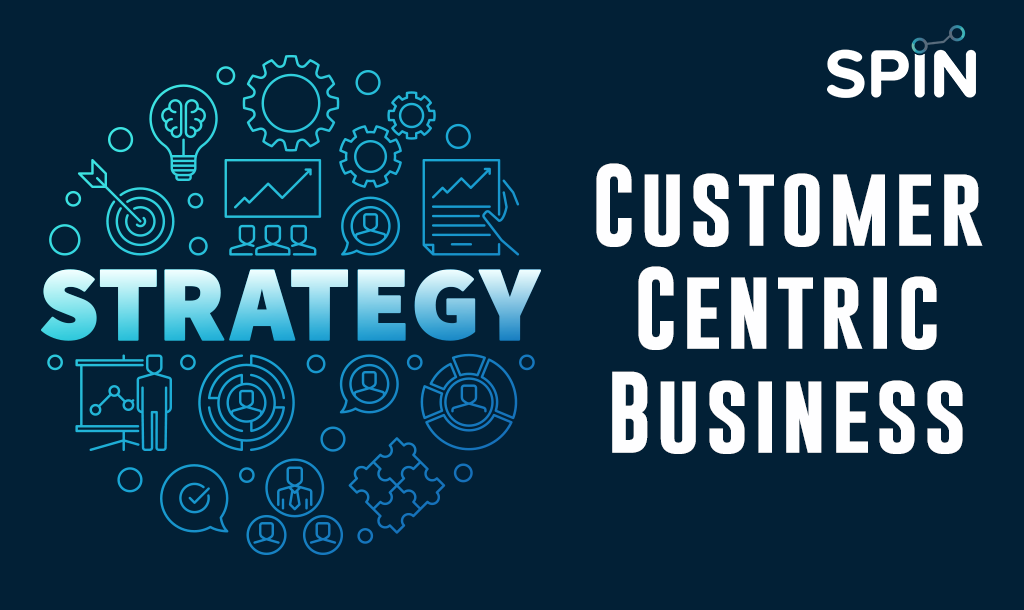With the world rapidly evolving, customers have become almost equivalent to business owners dictating the shopping terms, sales funnel, marketing efforts, etc. As per their needs, customers decide:
- How to shop
- Where to shop, and
- How to proceed with the transactions-online or offline
Along with adapting these changes in customer aspirations, organizations also need to redefine business operations for every industry to emerge more customer-centric and tailor-made as per customer needs.
Reality Check– Customer-centricity is not an out-of-the-box topic for organizations, principally for those trying to set a benchmark for client satisfaction.
Before we get further, let’s get an in-depth understanding of what a Customer-Centric company is.
What is a Customer-centric company?
In business terms, being a customer-centric company means offering unprecedented customer experiences right from awareness to purchasing, and finally post-purchase stage.

For a customer-centric company, it is a mandate to execute business operations that stimulates positive customer experiences, prior and post-sales conclusion. This assures to uphold the culture of repeating customers, and boosts consumer loyalty for increased profits.
Does your business is in need of it?
Business needs Customer-centricity: Why
Market hypothesize confirms that businesses that apply customer-centric strategies encounter a 55% increase in profits, year by year. For such businesses, customer-centricity is more than mere words on a paper and goes beyond employee meetings or customer surveys.
If the target is to improve the business value and be in sync with the changing trends, incorporating customer-centric strategies is the key.
As per the core principle of customer-centricity, every organization in any industry requires a robust foundation in 1) leadership and 2) strategy, and the poised use of 3) people, 4) platforms and 5) processes.
How to be a customer-centric business?
Customer-centricity commences with a company’s culture and commitment to customer’s success.
Here is how your organization can turn into a fully-fledged customer-centric business.

1. Predict customer requirements
Anticipating the market’s future needs is a game-changing business move. To be customer-centric, it is imperative for companies to anticipate customer needs and provide helpful suggestions accordingly.
2. Compile customer feedback
Frequent and regular communication with customers is the key to successful customer-centricity. Thanks to the digital transformation of the world, there are countless encounters to accumulate customer feedback like emails, chat, In-app messages, SMS, FB messenger, etc.
3. Convenient customer support
Contacting the support team of a digitally built business is the most difficult task. Easy access to customer support builds rapport and trust, laying the foundation for long-term business relationships.
4. Deliver proactive customer service
Providing customers with added value beyond the point of purchase, like proactive customer service- resources to customers to solve minor problems independently, is the key differentiator.
5. Move beyond purchase
Only with added benefits that extend beyond the point of purchase can old customers be motivated to buy again, and create a memorable experience.
Measuring customer-centric success is crucial:

Customer Centric Business Strategy
To measure the success of a customer-centric business, taking into account the following top three significant customer metrics is fundamental:
Net Promoter Score
Are you happy with the products/services?
NPS that focuses on unraveling customer loyalty uses the answer to define the success of customer-centricity.
Whenever a client answers to this question, the response is segregated into certain predefined criteria.

Promoters (9-10) – Such customers love the product/service and are quite likely to refer it. Customers who rate your product/service a 9 or 10 have high customer lifetime value and are indefinitely repeat customers.
Passives (7-8) – Such customers who rate your product/service a 7 or 8 are simply happy being a client, however, they are more prone to switching to a competitor in case of a better and inexpensive product.
Detractors (0-6) – Customers providing such ranking are unhappy with the product/service, and are more prone to damaging brand reputation.
Bottom line- The more Promoters a business has, the better the growth it experiences.
Churn Rate
Procuring new clients on a frequent basis puts most organizations in a quandary. Thus, more business is investing in retaining existing clients instead of chasing more fresh leads. Here’ why:
- Procuring new clients, compared to existing clients, increases the cost up to 5 times.
- Minimum 2% hike in customer retention is equivalent to cost-cutting by 10%.
- On an average, companies lose around 10% of their customer base annually.
Note: Companies with a higher retention rate grow faster.
Customer Lifetime Value (CLV)
For any growing business, the customer base is one of the most valuable assets.
With CLV, the revenue collected from such clients during their customer lifetime, starting from the first purchase until the time transactions stop is measured.
With the help of CLV final calculations, it is easy to comprehend why a business should keep investing in customers.
Concluding thoughts
It is no news that businesses are reaching out to different ways to incorporate more customer-centric strategies in their approach.
Any organization that has a lack of customer data and priorities revenue over customer needs still has some catching up to do to sustain in the 21st– century business world.
Introducing the customer-centric brand culture is undoubtedly the best route for businesses to align leaders’ choices with the mindset of the team and cultivate the values. To successfully apply the customer-centric strategy, this culture must be in sync with other business strategies.
At SPIN, we maintain robust individual contact profiles and useful CLV insights and purchase likelihood tools that can help your esteemed organization to be customer-centric successfully, and market smarter.
Visit today: https://www.spinanalyticsandstrategy.com/


Great content! Super high-quality! Keep it up! 🙂